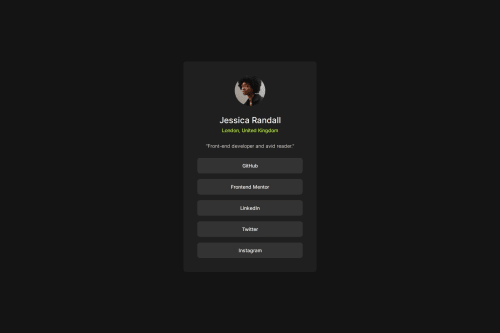Social links webpage using CSS Flexbox.

Solution retrospective
I am most proud of the hover feature which I implemented for the first time ever.
What challenges did you encounter, and how did you overcome them?I did not know how to center elements using flexbox which I figured out.
What specific areas of your project would you like help with?How do I use rems and ems if the font-sizes are not nice multiples of each other. Specifically, in the case of this project, they were 24px and 14px, both of which are not nice multiples of 16. And 24 is not a nice multiple of 14. I could use rems and ems but it would look ugly (by ugly I mean if the root font size is 14px, then 24px would be around 1.714rem). Should I still use them in this case? Or is there a better way to go about this issue?
Please log in to post a comment
Log in with GitHubCommunity feedback
No feedback yet. Be the first to give feedback on hopefulobject's solution.
Join our Discord community
Join thousands of Frontend Mentor community members taking the challenges, sharing resources, helping each other, and chatting about all things front-end!
Join our Discord